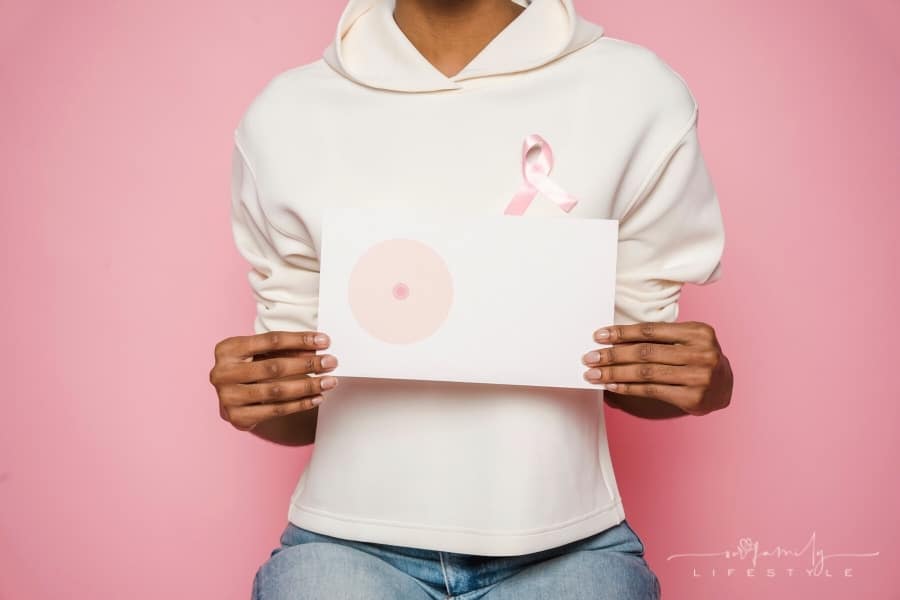How Breast Cancer Is Diagnosed: An Essential Guide
One in eight women will be diagnosed with breast cancer in their lifetime.
This disease is serious and can be life-threatening, so all women need to understand how breast cancer is diagnosed.
In this guide, we will discuss the various methods used to detect breast cancer and provide information on what to expect if you are diagnosed with the disease.
Let’s get started.

Breast Ultrasound
A breast ultrasound is a diagnostic test that uses sound waves to create an image of the inside of the breast. This test is one of the best for breast cancer screening as it evaluates masses or lumps that cannot be seen on a mammogram.
A gel is applied to the breast during the procedure, and a handheld device called a transducer is passed over the area.
The transducer emits sound waves that bounce off the breast tissue and create an image on a monitor. A doctor can then evaluate this image to look for any abnormalities.
This method is among the best for diagnosing breast cancer in women under the age of 50 and those who have dense breast tissue.
Mammogram
A mammogram is an X-ray of the breast used to look for any abnormalities or changes in the breast tissue. This test is most often used for screening purposes but can also diagnose breast cancer.
During a mammogram, each breast is compressed between two plates to get a clear image.
A radiologist then evaluates the X-ray images to look for any suspicious areas. Additional testing will be needed to confirm the diagnosis if an abnormality is found.
It is one of the methods that is most often used for breast cancer diagnosis.
Breast MRI
A breast MRI is a diagnostic test that uses magnetic waves to create an image of the inside of the breast. This test is not as common as a mammogram or ultrasound, but it can be helpful in certain situations.
For example, a breast MRI may be ordered if you have dense breast tissue or have already been diagnosed with breast cancer.
During the procedure, you will lie on a table with your breast inside a particular MRI machine. The machine emits magnetic waves that create images of the breast on a monitor. A doctor can then evaluate these images to look for any abnormalities.
Breast MRI is best for women who have already been diagnosed with breast cancer, as it can help determine the stage of the disease.
Breast Biopsy
A breast biopsy is a procedure in which a small tissue sample is removed from the breast and examined for cancer cells.
This test is usually ordered if an abnormality is found on a mammogram or ultrasound. There are several types of biopsies, but the most common is a fine-needle aspiration (FNA).
During an FNA, a thin needle is inserted into the breast and used to remove a small tissue sample. This sample is then examined under a microscope for cancer cells.
If cancer cells are found, additional testing will be needed to determine the stage of the disease.
Self-Examination
Although self-examination is not a diagnostic tool, it is essential for breast cancer awareness. All women should be familiar with how their breasts look and feel and report any changes to their doctor. You can do breast self-examination in the shower or while lying down.
To do a self-examination, you will need to use your fingers to feel for any lumps or changes in the breast tissue. Be sure to examine both breasts and look for anything that feels different from the rest of the breast.
If you find anything abnormal, be sure to report it to your doctor right away. Some of the signs to look for include a lump, thickening, or change in shape or size of the breast.
Physical Examination
In addition to self-examination, it is also essential to have regular physical examinations by a doctor.
During a physical exam, the doctor will feel for any lumps or changes in the breast tissue. This exam is usually done during a woman’s annual well-woman visit.
If you have any concerns about your breast health, discuss them with your doctor. They will be able to perform additional testing if necessary.
Early detection is key to the successful treatment of breast cancer, so it is essential to be aware of the signs and symptoms. If you have any questions, be sure to ask your doctor.
Early detection of breast cancer is key to successful treatment. Several methods can diagnose the disease, including mammography, ultrasound, MRI, and biopsy.
Be sure to discuss any concerns you have with your doctor so that they can perform the appropriate testing.
Self-examination and regular physical examinations are also crucial for early detection. If you have any questions, be sure to ask your doctor.


